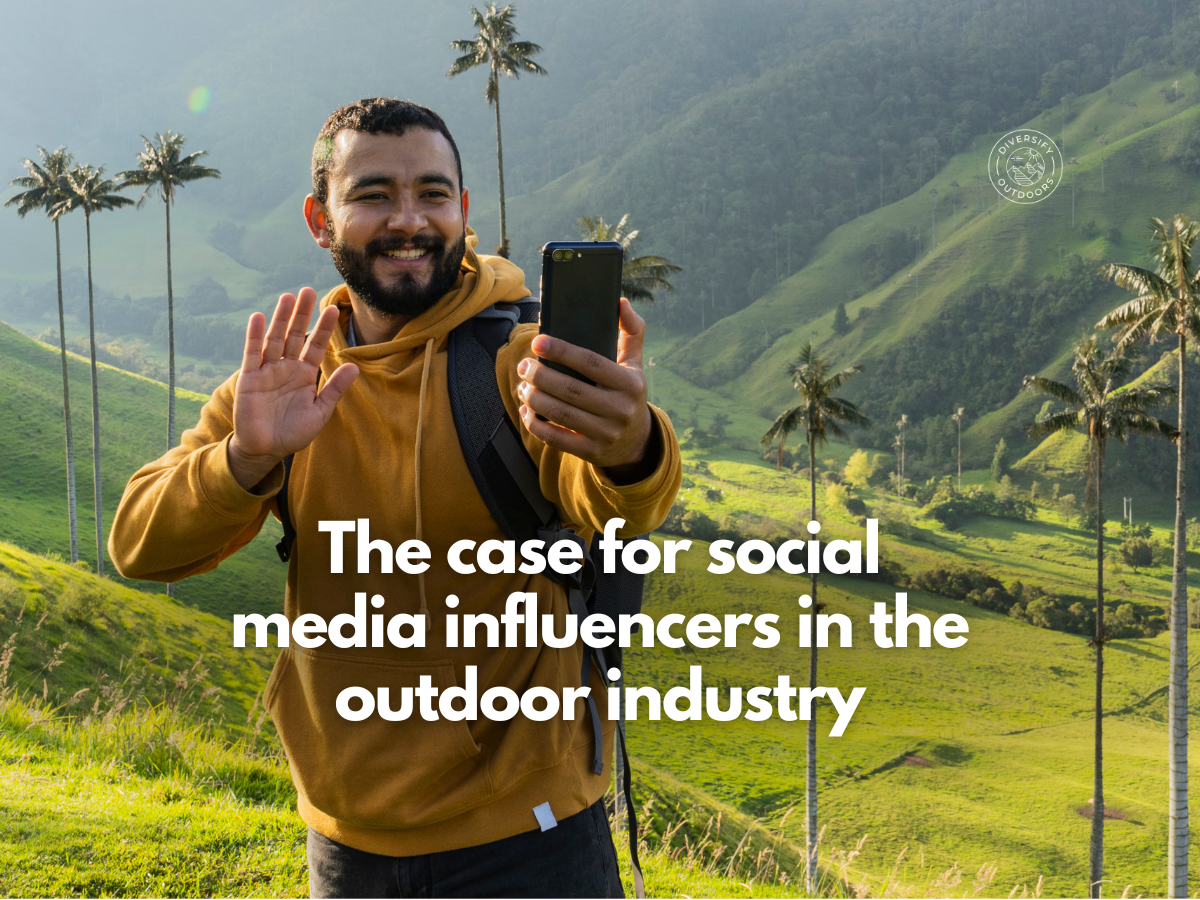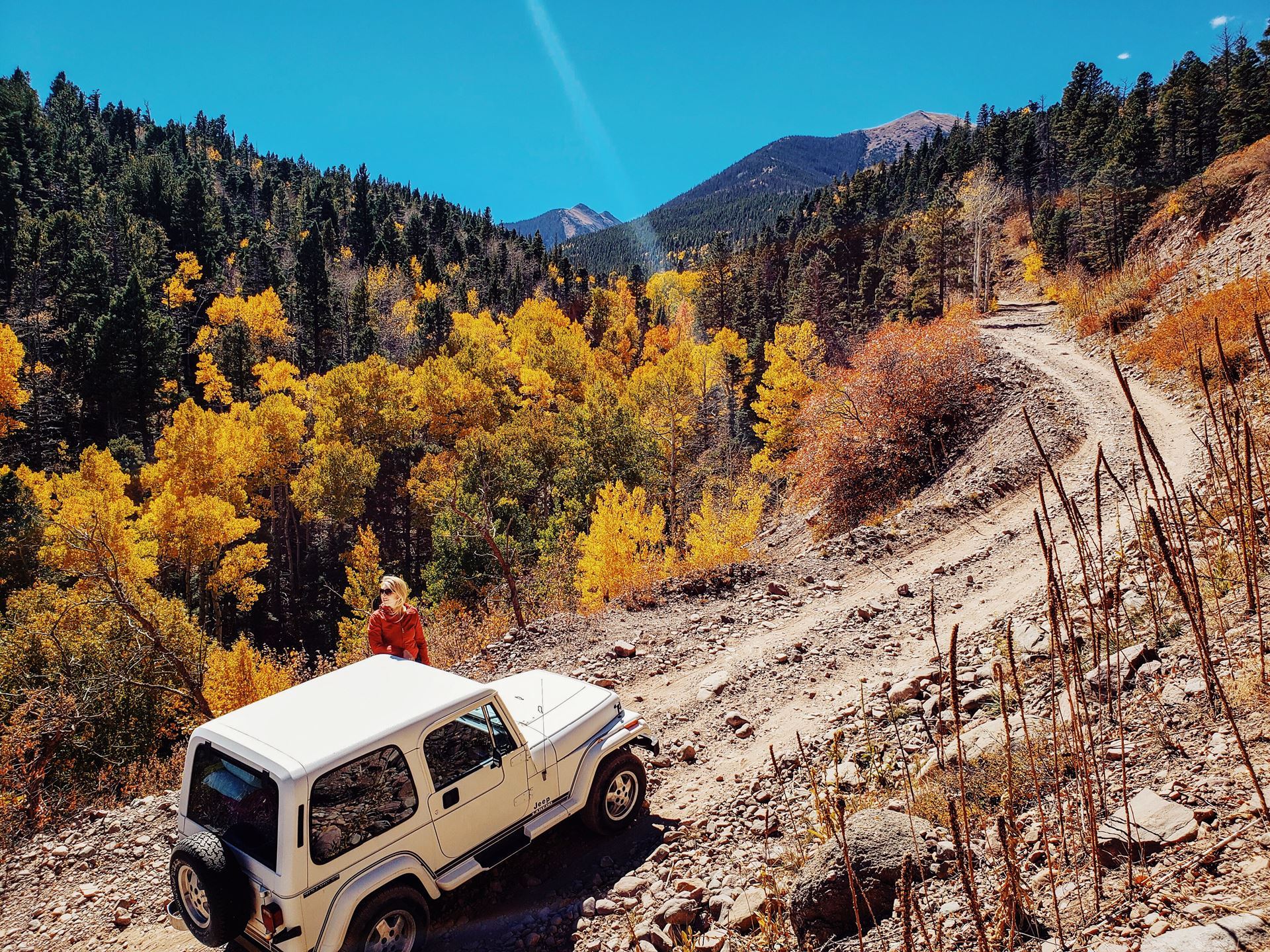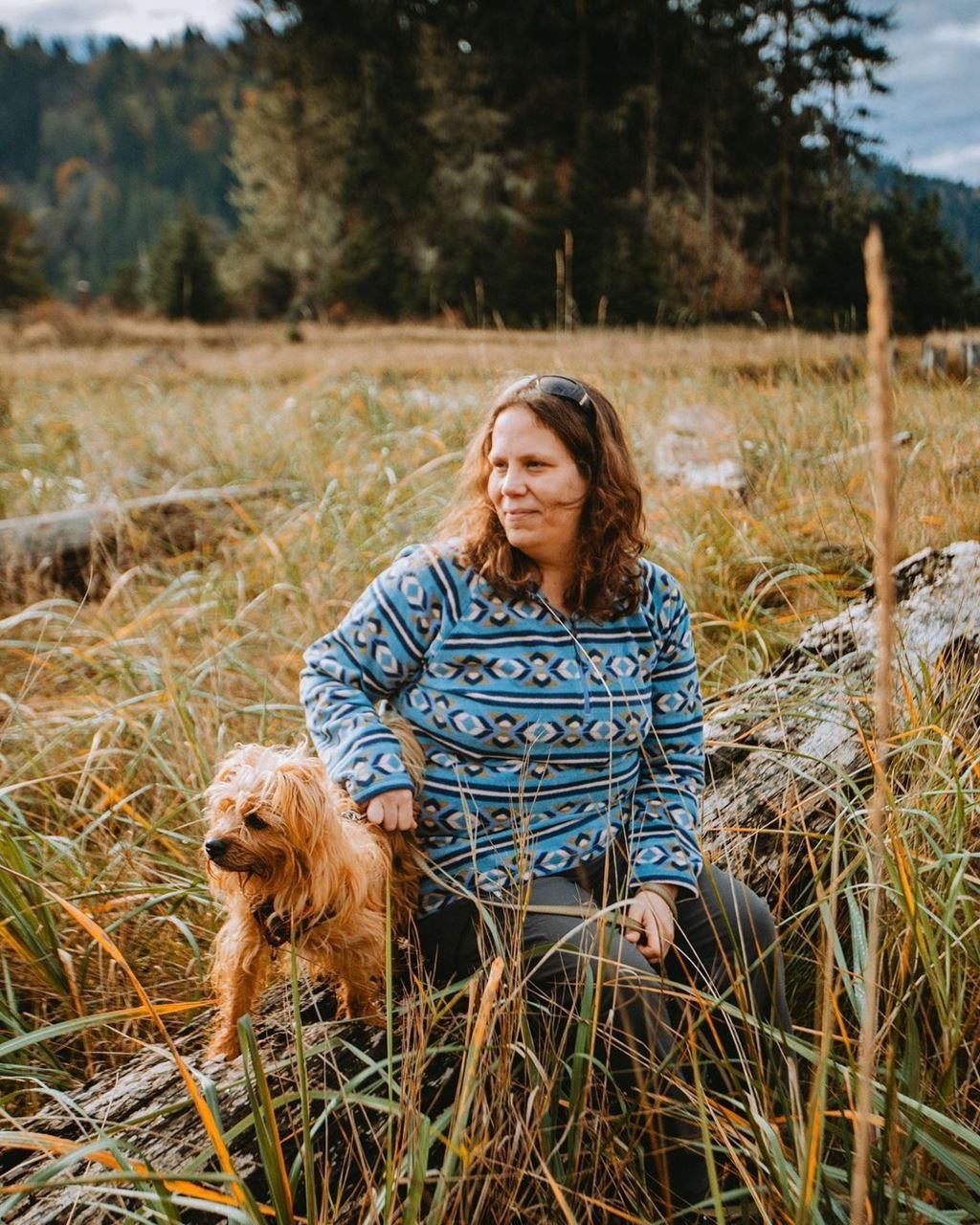

Photo credit: iStock image/Graphic Artist Sarai Pak
By Meg Leach
Social media has changed the way we interact with family members, friends, and our jobs, so it’s no surprise that it’s also leaving its mark on the outdoor industry. While many folks think that social media influencers are negatively impacting outdoor spaces, there’s an overwhelming amount of evidence showing the opposite is happening. The changes that influencers have made to the outdoor industry have arguably made it a better, safer community for all, despite criticism from gatekeepers who want to see these spaces unchanged.
For years, the prevailing image of people in the outdoors has been predominantly male, able-bodied, wealthy, and white. The industry has eagerly responded to this, in providing expensive gear meant to fit male bodies and a culture that can seem hostile to outsiders.
One of the most important services influencers can provide for the outdoor industry is presenting a different image of what it means to be an outdoorsy person. The efforts to change the perspective of who belongs outdoors have been slowly but steadily succeeding, thanks to social media influencers.
"My feed is full of incredibly diverse, lovely, and brilliant influencers, because I've curated it to be that way," said Jenna Celmer, Co-Founder, President, and Chief Community Officer of Basecamp Outdoor, an organization that connects people to jobs in the outdoors industry. "but if you type common search terms like 'hike' or 'outdoors' into Instagram, the first images you're shown are majorly white, straight-sized women and men. Easy step to change it: seek out, interact with, and amplify content from diverse creators. Tell the algorithm what you like."

Photo of Jenna Celmer by Justin Celmer
Representation in the outdoors is essential.An analysis from a recent study by the National Park Service found that white visitors to the United States’ national parks were "over-represented" over an 18-year period. During that same period, Black individuals were "the most ‘under-represented’ visitor group."
Non-visitors were surveyed and asked about what kept them from visiting the national parks, and cited reasons like "national parks are not accessible to people with disabilities" (23%), "I don’t know much about what there is to do in national parks" (32%) and "the people who work in the national parks are a different racial/ethnic background than mine" (5%).
The results of these surveys show just how hard it is to democratize access to the outdoors. For most people, shared experience is key in the discovery and education of outdoor spaces. When influencers from diverse backgrounds share their outdoor experiences, they show their online communities how transformative being outside in these spaces can be.
"We have done a lot of work to raise awareness and increase representation of disability in the outdoors, and I think this has helped disabled folks to connect with the outdoors," said Syren Nagakyrie, Founder and Director of Disabled Hikers. "Just seeing yourself reflected in these spaces is so important. Providing resources that are by the community and for the community, utilizing culturally relevant language (for example, talking about spoon theory) also helps people to connect."
Connection is what drives many consumers and creators of outdoor content to social media feeds. However, it can be overwhelming. "When I started off I attempted to follow ALL the outdoor folks, but it was hard to form real, deep connections," said Hilarie Maddox, an influencer who helps others connect to the outdoors through homesteading and rewilding.
"Now I have narrowed my feed to people that create content that is meaningful for me on my journey, who show up authentically, and who have shown an interest in building a mutual connection."
Influencers have the unique ability to break down barriers and show audiences that the outdoors is more accessible now than ever before. Whether it’s connecting followers with resources that can help get them to the trails, or showing someone how they can safely hike alone, influencers aren’t just in the market of posting gorgeous images of sunsets and summits. They’re challenging a system that has kept underrepresented groups of people from engaging with the outdoors for decades.
The work that outdoor influencers have put into the industry hasn’t gone unnoticed, as more and more brands are connecting with and enlisting the help of creators to connect to the public. Historically, brands have wielded a unique responsibility in educating the public about the outdoors.
For many people, inspiration to hike, climb, or explore comes from ad campaigns showing beautiful views of places like the Grand Canyon, or a sponsored athlete reviewing a piece of gear on YouTube. "Smart brands are also realizing that if they want to authentically connect with the many, many communities who enjoy the outdoors, their social media efforts must be led by people who represent, are trusted by, and/or understand those communities," Celmer said.
A key part of that connection is building a sense of trust and authenticity. Bringing authenticity to the market is something that many brands still struggle with, even with the rise in outdoor influencers. This is particularly true in connecting with the disabled community. "I seldom see outdoor marketing that authentically represents a diversity of disabled people," Nagakyrie said. "Some brands are making progress towards working with more disabled folks, but I would love to see more brands really dig into access and disability inclusion not only in their marketing, but in their products and company culture."

Photo of Syren Nagakyrie with their dog by Elise Giordano. Source:Eddie Bauer
As industry leaders recognize the power held by influencers, they’re not only changing the way they market the outdoors, they’re changing the way people are compensated for interacting with the outdoors. Companies like the North Face, Puffin Drinkwear, and Sekr are looking for content creators and offering paid ambassadorships for those with engaged audiences.
These opportunities are allowing people to build a life in the industry that may not have been accessible to them in the past. These changes aren’t just evolving the face of the industry, they’re improving how conversations happen in the industry as well.
"Influencers are TRUSTED, with highly engaged and often huge audiences and can truly cause massive impact when they speak up for their values," Celmer said. "We have seen so many social media influencers talk openly and vulnerably about topics like mental health, housing issues, equal pay, fatphobia, racism, ageism, gun violence. Openly discussing the issues and dilemmas we all face - and better yet, mobilizing an audience and facilitating change through creating or directing to solutions - is a power move."
The impact of openly having these conversations has be
.png)
en changing the way many outdoorsy people interact with the industry. Since the outdoor industry has traditionally held a cisgendered white man as its avatar, it has often been an unsafe or hostile space for BIPOC folks, women, and 2SLGBTQ+ individuals. By being outspoken about their values and forcing brands to step in line, influencers are leading the charge in changing the culture of the outdoors so it’s a safe and empowering space for all.
"I hope my community sees that homesteading and rewilding is at its core about finding freedom and success on our own terms," Maddox said. "It is achieved through mindset and lifestyle changes, and not about living in a certain place or having the right things. I want my community to see the power they have to reclaim a life that feels meaningful." Through education and building connections, influencers are letting people find their power in the outdoors and build a place that they can call their own.

Photo of Hillarie Maddox sitting in a garden by Jaquell Chandler
While there is sweeping support for a change of image in the industry, there's no denying that there has been a surge in gatekeeping intended to keep the industry as it’s been for decades. Critics of social media influencers say that trends in eco-tourism are harming delicate national resources and that the popularity of many of these influencers is causing national parks to become more crowded.
When considering this criticism, it’s important to remember where it’s coming from, and who has something to gain from keeping the outdoors the way they are. Upholding a restricted view of the outdoors doesn’t just harm individuals with limited access to these spaces, it can actually harm the industry by providing shortfalls in revenue for small parks and mutual aid organizations.
Despite the efforts of gatekeepers, brands know that the industry is changing, and that means they’re willing to pay for influencers to lead the charge. When social media influencers empower others to get outdoors, the entire industry as a whole grows stronger. Whether these creators are connecting their followers to brands they trust, or inspiring others to hit the trails, they’re a critical part of democratizing these spaces, so everyone can find the freedom that comes from getting outside.